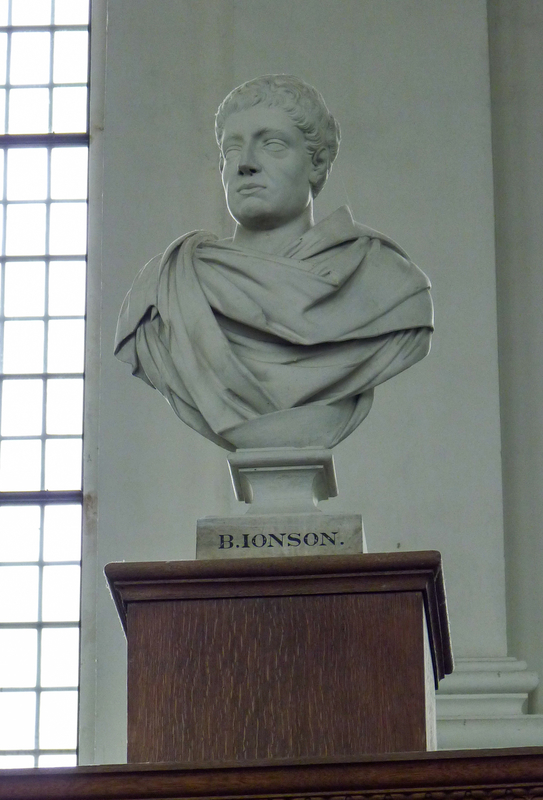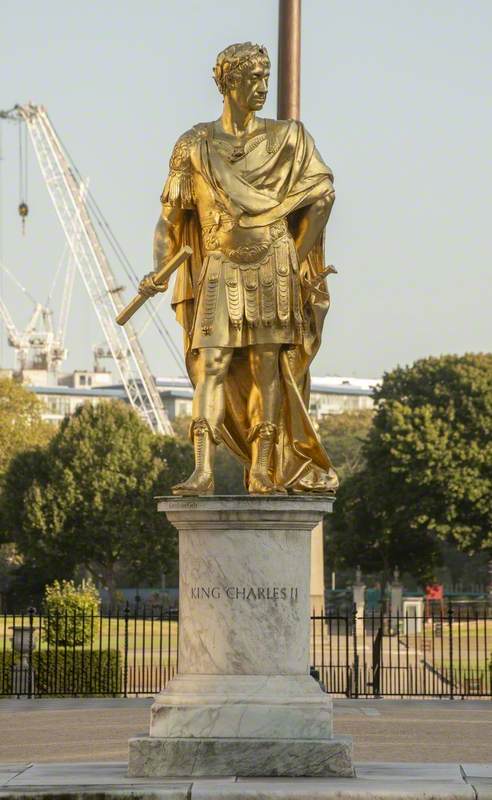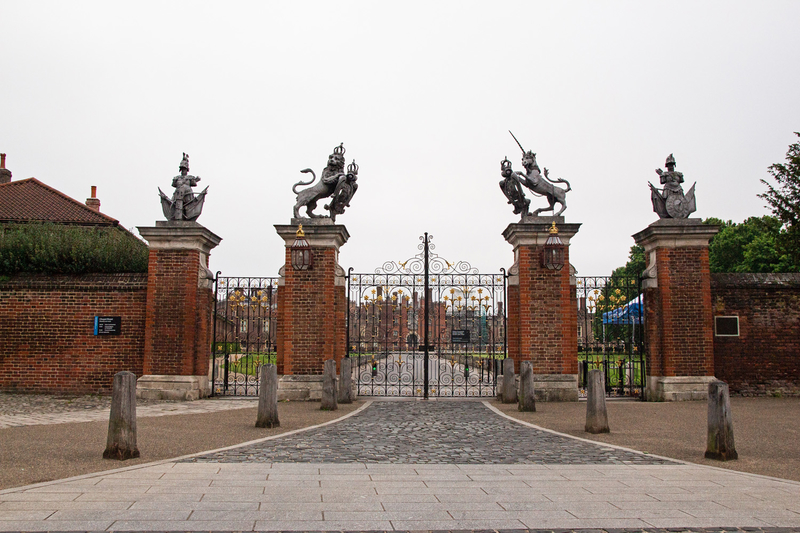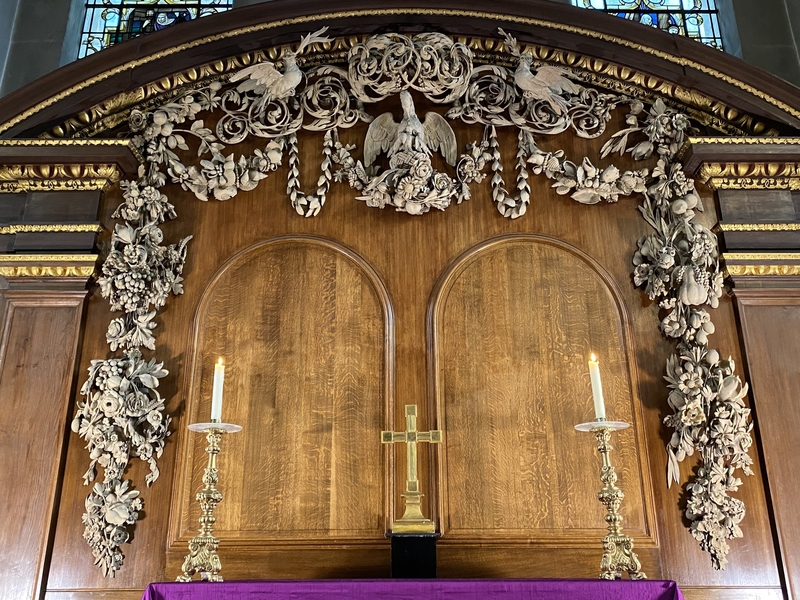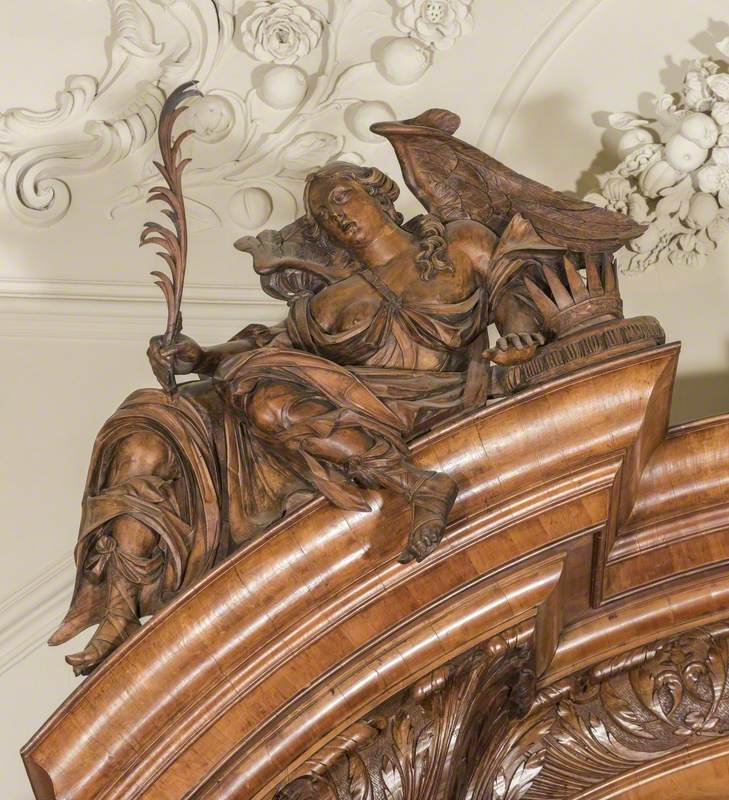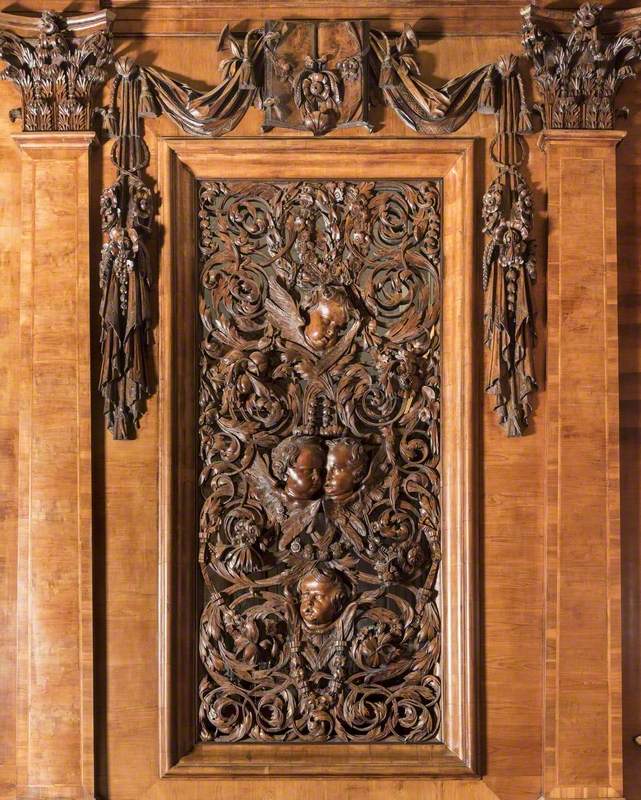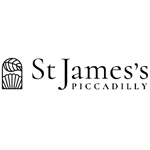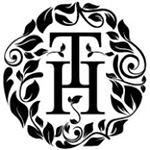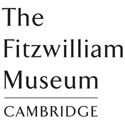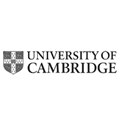
Unknown Sitter in Classical Dress* 1690s
Grinling Gibbons (1648–1721)
Trinity College, University of Cambridge
Anglo-Dutch woodcarver and sculptor, the son of English parents who had business interests in the Netherlands (his father was a draper). He settled in England c.1667 and was ‘discovered’ by John Evelyn (see Diary, 18 Jan. 1671). Evelyn introduced him to King Charles II and to Sir Christopher Wren, who employed him on decorations at Hampton Court and St Paul's Cathedral. In 1693 he was appointed royal master carver. Gibbons was unsurpassed in his day for naturalistic decorative carving of fruits, flowers, and shells, strung together in garlands and festoons, with small animals, cherubs' heads, etc. Horace Walpole said of him: ‘There is no instance of a man before Gibbons who gave to wood the loose and airy lightness of flowers, and chained together the various productions of the elements with the free disorder natural to each species.’
Text source: The Oxford Dictionary of Art and Artists (Oxford University Press)
